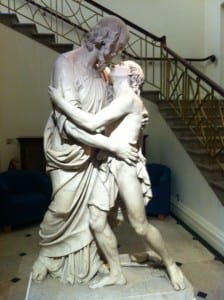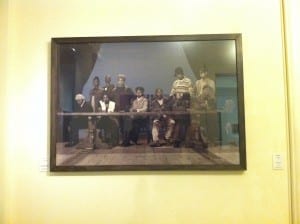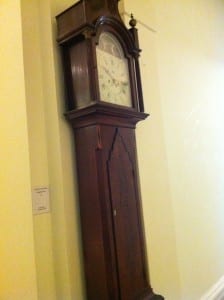When entering ‘Gallery 3′ of The Usher Gallery, although it may go unnoticed, a faint ticking sound plays as the public view the art behind the glass casing. The sound is played from a small stereo hidden above James Ushers’ personalised pocket watch collection, which instinctively draws you towards the clockwork display.
The sound being part of Liverpool based duo Jonathan Raisin and Elizabeth Willow’s Something Wonderful event. As part of this event, Raisin and Willow intended to “include overlooked or forgotten places and objects” (Fish, E, 2012) into their work. By adding a soundtrack to a room which can be overlooked so easily draws much more attention to it, causing the public to focus in on things that they may not have noticed before. The duo were inspired by “things lost and found, second-hand objects, overheard conversations and snatches of sound, fragments, glimpses and everyday normality as well as strangeness” (Lincolnshireonereviews, 2012). The particular ‘snatch’ of sound which they placed in The Usher Gallery is attached:
Raisin and Willow – Something Wonderful
Due to the circumstantial playing of the stereo in The Usher Gallery, it is easy to mistake the rooms ‘soundtrack’ to be the sound of the pocket watches ticking away from behind their cabinets, as the sound coupled with the aesthetics of the room causes our minds to jump to that conclusion. So, what I would really like to know are your thoughts on Raisin and Willow’s Something Wonderful?, how does it make you feel when it’s separated from the imagery of a clock?
Author: Chloe Doherty
Work Cited:– Fish, E (2012) Something Wonderful, Online: http://thelincolnite.co.uk/2012/11/artists-give-their-views-on-lincolnshires-best-bits/ (accessed 12 February 2013)
– Lincolnshireonereviews (1012) Raisin and Willow’s Something Wonderful, Online: http://lincolnshireonevenues.com/commissioning-projects/raisin-willows-something-wonderful/ (accessed 12 February 2013)






